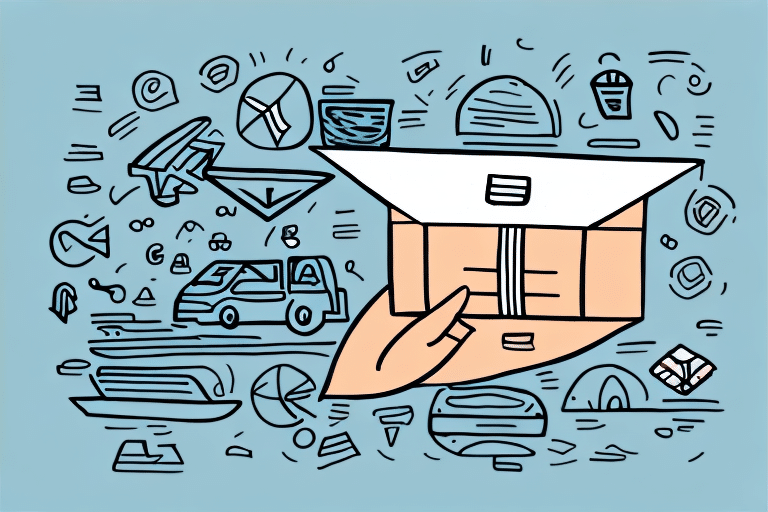Navigating Late Deliveries: Best Practices for Customer Service
Timely delivery is a cornerstone of customer satisfaction and loyalty. According to a Forbes Business Council report, 79% of customers consider timely delivery as a key factor in their purchasing decisions. When delays occur, effective management can turn potential setbacks into opportunities for strengthening customer relationships. Here are best practices to handle late deliveries:
1. Understanding the Root Cause of Late Deliveries
Identifying the underlying reasons for delivery delays is essential for preventing future occurrences. Common causes include supply chain disruptions, logistical inefficiencies, and unexpected external factors such as extreme weather. Conducting a thorough analysis involving supplier performance reviews, logistics audits, and employee feedback can help pinpoint specific issues. Implementing tools like Supply Chain Management (SCM) systems can also streamline operations and reduce the likelihood of delays.
2. Communicating Effectively with Customers During Delays
Transparent and proactive communication is crucial when handling late deliveries. According to a study by PwC, 73% of customers cite good communication as a key factor in their loyalty. Utilize multiple channels such as email, SMS alerts, and social media updates to keep customers informed. Providing clear explanations and regular updates helps manage expectations and maintains trust.
3. Providing Timely and Appropriate Compensation for Late Deliveries
Offering compensation demonstrates your commitment to customer satisfaction. Compensation options include discounts on future purchases, free shipping, or gift cards. A Net Promoter Score (NPS) survey indicates that effective compensation can reduce negative reviews by up to 50% and increase customer retention rates.
4. Implementing Strategies to Minimize Late Deliveries in the Future
Proactive planning can significantly reduce the occurrence of late deliveries. Strategies include:
- Increasing buffer times in delivery schedules to accommodate unexpected delays.
- Partnering with reliable logistics providers who have a proven track record of timely deliveries.
- Utilizing advanced analytics to predict and mitigate potential disruptions.
- Establishing a robust feedback system to continuously identify and address delivery issues.
5. Maintaining a Positive Attitude and Professionalism
Handling late deliveries with a positive and professional demeanor can preserve customer trust. Avoid attributing blame or making excuses; instead, focus on solutions. Empathetic communication and a willingness to assist can turn a negative experience into a demonstration of excellent customer service.
Turning Late Deliveries into Opportunities for Customer Loyalty
While late deliveries can initially frustrate customers, they also provide a chance to enhance loyalty through exceptional service recovery. Implement the following practices to transform negative experiences into positive outcomes:
1. Turning a Negative Customer Experience into a Positive One
An effective apology can mitigate the frustration caused by a late delivery. Personalized apologies, coupled with meaningful compensations like discounts or complimentary products, show customers that you value their business. Research from the Harvard Business Review highlights that sincere apologies can increase customer retention by up to 10%.
2. The Importance of Follow-Up Communication after a Late Delivery
Following up with customers post-delivery reinforces your commitment to their satisfaction. A personalized email or phone call to confirm receipt and inquire about their experience can build trust and encourage repeat business. According to CustomerThink, effective follow-up can enhance customer loyalty by ensuring that any issues are fully resolved.
3. Building Trust and Credibility through Transparency
Transparent communication about delivery processes and challenges fosters trust. Share updates on improvements made to prevent future delays and provide insights into your logistics operations. Transparency not only builds credibility but also demonstrates your dedication to delivering reliable service. The Nielsen Global Trust in Advertising Report shows that transparency significantly impacts customer trust and brand loyalty.
4. Providing Timely Updates on Delivery Status
Keeping customers informed about their order status reduces uncertainty and anxiety. Implementing real-time tracking systems allows customers to monitor their package from shipment to delivery. According to a study by Educba, real-time tracking can enhance customer satisfaction by providing transparency and control over the delivery process.
Proactive Measures to Prevent Late Deliveries
Preventing late deliveries is more effective than dealing with their consequences. Implement the following proactive measures to ensure timely deliveries:
1. Streamlining Your Supply Chain for Faster Delivery Times
Optimizing your supply chain enhances delivery efficiency. Techniques include:
- Improved inventory management: Utilize inventory management systems to maintain optimal stock levels and reduce delays.
- Demand forecasting: Implement predictive analytics to anticipate customer demand and adjust inventory accordingly.
- Strategic partnerships: Collaborate with reliable logistics providers and consider establishing warehouses closer to key markets to expedite delivery times.
According to McKinsey & Company, streamlined supply chains can reduce delivery times by up to 20%.
2. Investing in Technology to Improve Delivery Efficiency
Modern technology plays a pivotal role in enhancing delivery efficiency. Invest in:
- Warehouse Management Systems (WMS): Automate inventory tracking and order processing.
- Route Optimization Software: Optimize delivery routes to reduce transit times and fuel costs.
- Automated Delivery Solutions: Implement drones or autonomous vehicles for last-mile delivery.
Technological advancements, as highlighted by Forbes Technology Council, can significantly reduce delivery times and enhance overall operational efficiency.
3. Prioritizing Customer Service in Your Delivery Strategy
Integrating customer service into your delivery strategy ensures that customer satisfaction remains a top priority. Strategies include:
- Multiple delivery options: Offer flexible delivery windows and methods to cater to diverse customer preferences.
- Clear delivery information: Provide precise delivery estimates and comprehensive tracking details.
- Hassle-free returns and exchanges: Simplify the return process to enhance customer convenience.
Encouraging and utilizing customer feedback can highlight areas for improvement and adapt your delivery strategy accordingly. The Statista study indicates that prioritizing customer-centric delivery options increases satisfaction rates by over 30%.
4. Conducting Regular Performance Reviews of Your Delivery Partners
Consistently evaluating the performance of your delivery partners ensures that they meet your standards. Key performance indicators (KPIs) to monitor include:
- On-time delivery rates: Track the percentage of deliveries that arrive on schedule.
- Customer feedback: Gather and analyze customer reviews and ratings related to delivery experiences.
- Issue resolution time: Measure how quickly delivery partners address and resolve problems.
If a delivery partner consistently underperforms, consider negotiating improvement plans or exploring alternative partnerships to maintain service quality. According to Supply Chain Digital, regular performance reviews can lead to a 15% increase in delivery reliability.
Enhancing Customer Loyalty Through Exceptional Delivery Management
Every interaction with a customer is an opportunity to build loyalty, especially in the context of delivery management. By excelling in handling deliveries, you can encourage repeat business, positive referrals, and valuable customer feedback. Implementing real-time tracking, offering flexible delivery options, and ensuring transparent communication are pivotal in creating a seamless delivery experience. Additionally, fostering a culture of continuous improvement and embracing customer feedback can further solidify your reputation as a reliable and customer-centric business.
Conclusion
Effective management of late deliveries is essential for maintaining and enhancing customer loyalty. By understanding the root causes, communicating transparently, offering appropriate compensation, and implementing proactive measures, businesses can turn delivery setbacks into opportunities for growth. Investing in technology, streamlining supply chains, and prioritizing customer service further contribute to reducing delivery delays and improving overall customer satisfaction.
Providing customers with real-time tracking information and flexible delivery options enhances their experience and reduces anxiety associated with delays. While some delivery issues are beyond your control, your response to these challenges can significantly influence customer perceptions and loyalty.
Ultimately, a commitment to timely and reliable delivery processes, combined with exceptional customer service, ensures that your business not only meets but exceeds customer expectations, fostering long-term loyalty and sustainable growth.




















